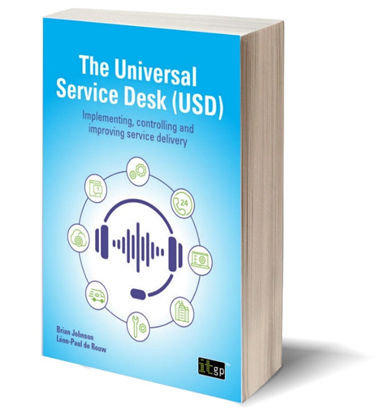Universal Servicedesk
Universal Servicedesk
The USD directs the bundling/combining and delivery of user or customer calls and by default is the front office intermediary between customer and delivery organization, or ‘back-office’. The USD can be found anywhere, internal service organization (IT, facilities, HR etc. ), as customer service centre(call centre,helpcentre, customer service centre etc) for any enterprise or as a temporary single point of contact for events, incidents, requests or large scale interventions. Depending on whom you consult, the USD has it’s own language, approach or good practice.
The USD is the central point of contact within an enterprise for all requests for, or enquiries about the services provided to customers, both internal and external. Depending on the goals of the enterprise of course. Your enterprise might offer 24/7 customer centric responses to everything from a request for a new desk and chair to an enquiry about moving entire offices to Zimbabwe.
The USD is a concept of service delivery and resolution through different channels (internet, snail mail, intranet, phone, email, physical counter where arm wrestling can take place). USD also covers the role of account management and its focus on customer relationships at different levels in the enterprise.
By means of a logical action plan this book explores these subjects and others, including the building and the improvement of a USD. The book covers the principles of a USD within the well- known ‘front office-back office’ concept. Well, if it is not well known, it soon will be.

Inter alia, the book provides practical tips and tricks about use of software tools, service sites, self-service, call centre functionality, desk, account management, processes between USD and back office, quality management, management and control, competence management, capabilities and service catalogue. Attention is also given to the evolution of the USD as part of integrated workplace management.
The solutions presented in this book are generic and easily applicable. The contents and descriptions can be translated for many other business processes.
After reading this book the reader will have the tools and insight to further develop and professionalize the USD. Professionals (service managers, facility managers, project managers, managers and employees of a USD) can immediately apply the knowledge given.